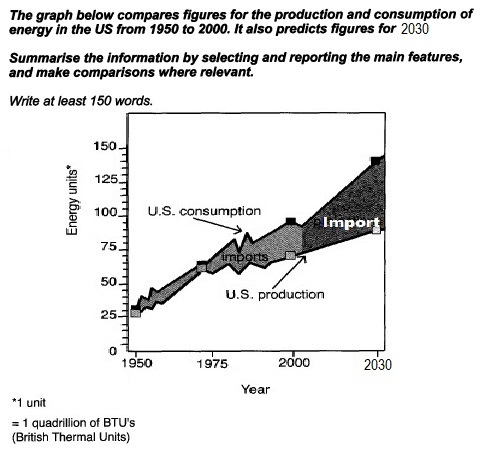The graph
below compares figures for the production and consumption of energy in the US
from 1950 to 2000. It also predicts the figures for 2030.
Summarize
the information by selecting and reporting the main features, and make comparisons
where relevant.
Write at
least 150 words.
The given line graph highlights the figures for the production and consumption of energy in the US between 1950 to 2000 and predictions up to 2030.
Overall, up to 1975, both consumption and generation of energy remained parallel, but after that the gap widened, and will further increase up to 2030.
In 1950, the consumption and production were almost 25 quadrillion BTUs, over the next 25 years up to 1975, both rose side by side to almost 60 and slightly less than 60 respectively. However from 1975 to 2000 while the former rose phenomenally to almost 100 BTUs, the latter failed to keep up the pace and reached just over 60 approximately, the deficit was plugged with power imports, which rose consistently.
The forecasts for 2030 show, it can be seen that there will be a spike in the consumption, which is expected to touch almost 156 BTUs, but the production will nonetheless rise gradually remaining well under 100 BTUs, reaching 80 BTUs. This implies that imports will rise further.


